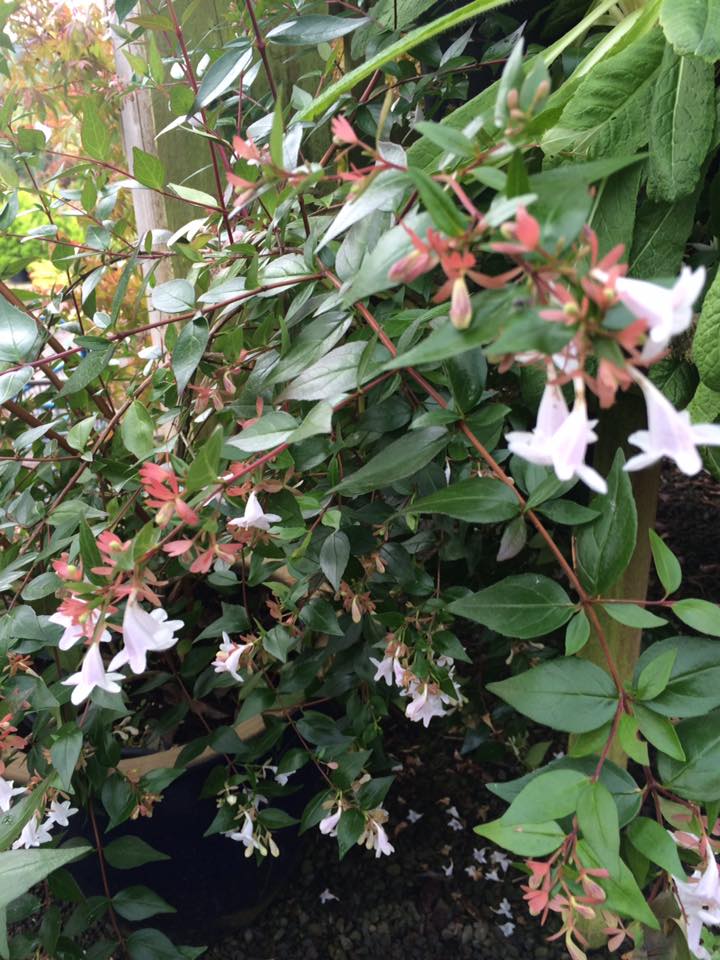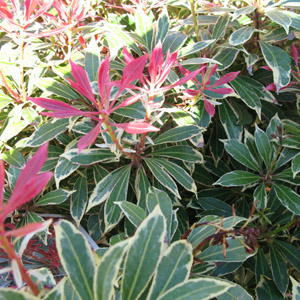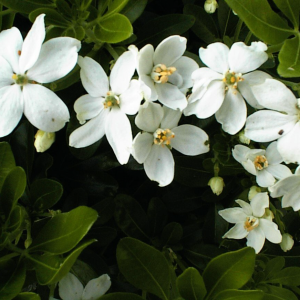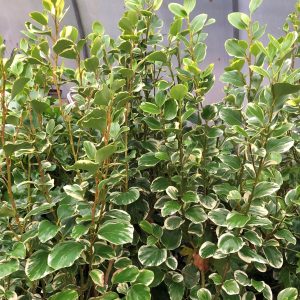Abelia grandiflora
Abelia grandiflora is a great end of season performer. It is evergreen, scented, and straddles the late Summer early Autumn perfectly. Plant aside a door or window where the wafted scent can be fully appreciated. It will grow to a height of 1.4m. and spread to 2m, but will respond well to trimming if some curbing of growth is required. It will flower from July to September, and performs best in full Sun. Hardy.
MORE
Abelia grandiflora is a stunning, deciduous shrub that is native to both China and Mexico. It is commonly known as the glossy abelia or grandiflora, and it is widely cultivated in many parts of the world, including Europe, North America, and Asia. This shrub is highly valued for its profuse, fragrant flowers, its glossy foliage, and its compact, rounded growth habit. In this article, we will explore the key features and benefits of Abelia grandiflora, as well as some tips on how to grow and care for this beautiful plant.
Abelia grandiflora is a multi-stemmed shrub. Its growth habit is generally compact and rounded, with arching branches that give it a graceful appearance. The leaves are small, ovate, and glossy, with a deep green color that is retained well into the fall. The flowers are the most distinctive feature of Abelia grandiflora, with an abundance of delicate, funnel-shaped blooms that are about 1 inch (2.5 cm) long. The flowers are usually pink or white, and they have a sweet, honey-like fragrance that attracts bees, butterflies, and other pollinators.
Abelia grandiflora is a relatively easy shrub to cultivate, and it can be grown in a variety of soils and locations. It prefers a sunny or partially shaded site, with well-draining soil that is rich in organic matter. It is also tolerant of a range of pH levels, from acidic to alkaline. This shrub is generally hardy in USDA zones 6 to 9, and it can withstand temperatures as low as -10°F (-23°C) in winter. It is important to note, however, that Abelia grandiflora may suffer from winter damage if it is grown in areas with harsh winter conditions.
Abelia grandiflora can be propagated by both softwood and hardwood cuttings, as well as by layering and seed. Softwood cuttings are taken in late spring or early summer, while the plant is actively growing, and they are usually treated with rooting hormone before being placed in a rooting medium. Hardwood cuttings, on the other hand, are taken in late fall or winter, when the plant is dormant, and they are typically rooted in a cold frame or other protected area. Layering involves bending a low-hanging branch of the shrub down to the ground and covering it with soil, allowing it to develop roots before being separated from the parent plant. Seed propagation is also possible, but it is less reliable and may result in variations in flower color and other characteristics.
Abelia grandiflora requires little maintenance once established, but there are a few key things to keep in mind to ensure its health and longevity. Watering is important during the first year or two after planting, especially during dry spells, to help the shrub develop a strong root system. After that, it is generally drought-tolerant and only needs occasional watering during prolonged dry periods. Fertilization is also beneficial, especially in poor or sandy soils, and a slow-release fertilizer can be applied in early spring. Pruning is usually not necessary, but the shrub can be lightly shaped or trimmed after flowering to maintain its compact form.
Abelia grandiflora is a versatile shrub that can be used in a variety of ways in the landscape. It is often planted as a specimen plant.







Reviews
There are no reviews yet.